19.2.1.1. Shaft
Shaft should be created in order to make transmission system. User can make a shaft model with various cross section expressed by FFlex beam. User can modify length, inner radius, outer radius and element length for shaft shape about each cross section. Section property, material can also be modified. And, user can create not only general section but also coaxial section at the last general section.
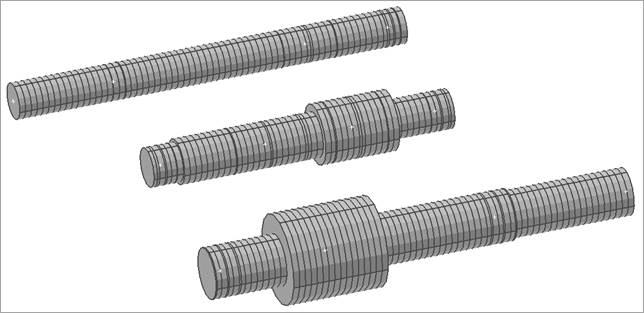
Figure 19.2 Example for Shaft
19.2.1.1.1. Modeling Options
Point, Direction, WithDialog
Point: Select a point to define a start point of the shaft.
Direction: selects a longitudinal direction of the shaft.
WithDialog: Modifies the property for the shaft. The shaft is created with clicking OK.
19.2.1.1.2. Properties
The Shaft property page is shown in Figure 19.3 And its parameters are explained below. The user can modify properties for the shaft such as shaft shape information. The pages such as Body Page, FEInfo. Page, Connecting Parameter Page, and Node Scope Page are same with FFlex body. The general pages such as General Page, Graphic Property Page, Origin and Orientation Page are same with general body.
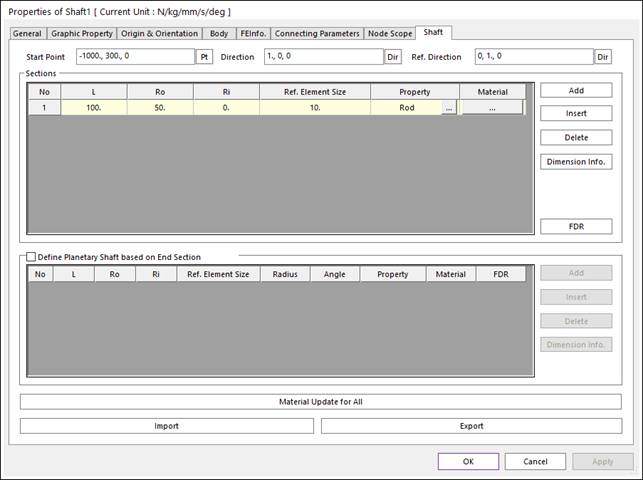
Figure 19.3 Shaft property page [Shaft page]
Start Point: Defines a start point of the shaft.
Direction: Defines a direction of the shaft.
Ref. Direction: Defines a normal direction of the shaft.
Sections: Defines each section.
Length (L): Section length
Outer Radius (Ro): Section outer radius
Inner Radius (Ri): Section inner radius
Element Size: this value is the size of uniformly dividing Length. When dividing, if there is remainder, increase the number of elements one more for each section.
Property: Support two type as Rod, Tube. Rod if inner radius is zero, Tube type otherwise. For more information, click here.
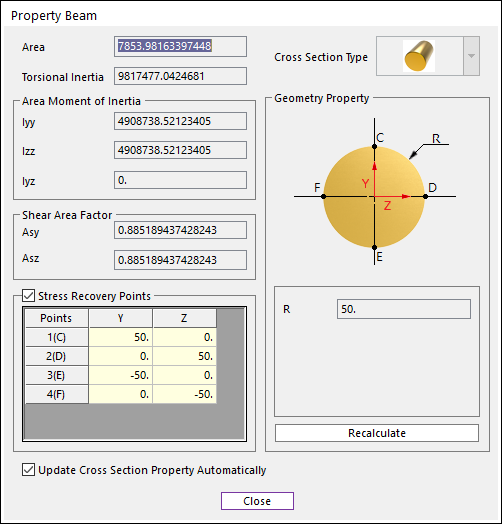
Figure 19.4 Property dialog for each section.
Material: Defines material information for each section. Material type is a linear isotropic. For more information, click here.

Figure 19.5 Material dialog for each section.
FDR: For all general sections, this function is responsible for bearing and gear to define FDR in the connecting part.
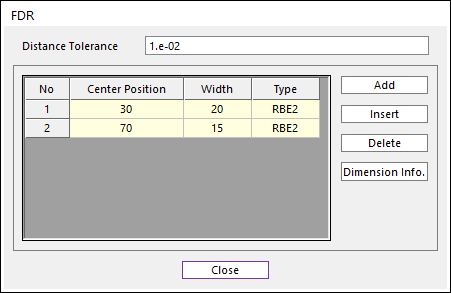
Figure 19.6 FDR dialog for all general sections.
Distance Tolerance: This tolerance is used when assigning primary and secondary node of FDR to existing shaft.
If the distance between the newly added node (primary or secondary node) of FDR and the existing node is smaller than this tolerance, use the existing node, not new node for FDR.
Center Position: Define position of primary node.
Width: Define position of two secondary nodes.
Type: Only support RBE2 type.
Dimension Info. : Describe FDR creation method.
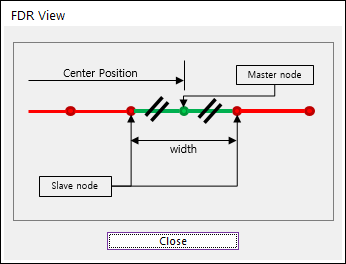
Figure 19.7 Dimension info. of FDR dialog.
Define Planetary Shaft based on End Section: If this function is checked, user can create an additional shaft for planetary gears at the end of general sections.
Length (L): refer. to general section.
Outer Radius (Ro): refer. to general section.
Inner Radius (Ri): refer. to general section.
Element Size: refer. to general section.
Radius: To define start position of coaxial section, distance from the center of last general section.
Angle: To define start position of coaxial section, angle from axis of last general section.
Property: refers to general section.
Material: refers to general section.
FDR: refers to general section.
Dimension Info.: Describe coaxial creation method.
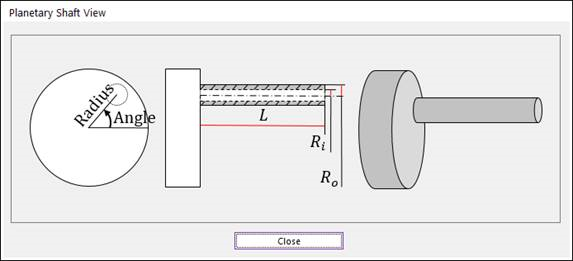
Figure 19.8 Dimension info. about Planetary Shaft View.
Material update for All: If this function is used, user can change material information through general and coaxial section.
Import: Imports section information as XML format.
Export: Exports section information as XML format.